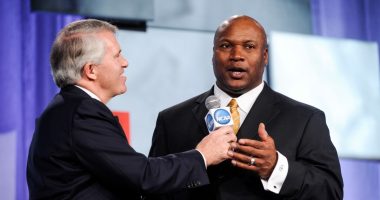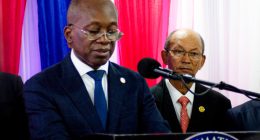
Federal Reserve Chairman Jerome Powell could shed new light on interest rates and the state of the economy on Wednesday.
Photo: Greg Nash/Associated Press
WASHINGTON—Federal Reserve officials resume deliberations Wednesday about how to communicate their plans to support the economy with large-scale bond buying.
The central bank in September updated its guidance about how long its officials expect to hold interest rates near zero. Since then, officials have turned their focus to refining an asset-purchase program that began in March to stabilize market functioning and now are focused on stimulating economic growth.
The Fed will release its policy statement at 2 p.m. Eastern time along with new economic projections. Chairman Jerome Powell will follow with a press conference at 2:30 p.m., at which he could explain any new policy changes or guidance.
Here’s what to watch:
Asset-Purchase Plans
At their meeting last month, Fed officials suggested they should provide updated guidance “fairly soon” about how long they expect to continue buying Treasury and mortgage securities.
The bank has been buying $120 billion a month of those securities since June, a considerably larger pace than its open-ended bond-buying program between 2012 and 2014. With interest rates pinned near zero and officials signaling a high bar to raise rates, the asset purchases are the main tool with which they could provide more or less support to the economy.
The Fed has said since June that those purchases would continue “over coming months.” Officials could decide this week to provide new language that links the time frame for the program to economic conditions—for example, by saying that the central bank won’t reduce purchases until officials are confident that they are well on track to meet their employment and inflation goals.
Additional Stimulus
In recent weeks, investors have focused their attention on a separate issue: whether the Fed might change the composition of its holdings by buying more securities with longer-term yields in an effort to hold those yields down, as it did during bond-buying programs last decade.
If more stimulus is warranted, several officials have said they would prefer to lengthen the maturity profile of their holdings before they increase the size of those monthly purchases.
Some analysts say such additional stimulus would provide extra insurance against the risks to the economy from rising coronavirus cases and business restrictions. They say it also would enhance any guidance around asset purchases and demonstrate the Fed’s commitment to seek periods of inflation above the central bank’s 2% objective.
No Fed officials have publicly advocated changing the composition of the Treasury purchases at this week’s meeting. Instead, they have highlighted the importance of fiscal policy in providing support to the economy before vaccines are broadly available. Officials might decide to gather more information about the economic outlook before deciding to provide more stimulus.
Long-term interest rates are already very low, supporting rate-sensitive sectors of the economy like the housing market, which is booming. In addition, broader financial conditions are easy, meaning many companies have ample access to additional borrowing, with investors optimistic about the economy’s prospects once vaccines are more widely distributed.
Economic Outlook
Fed officials face a mixed economic outlook. For the next few months, risks to growth are rising amid an increase in Covid-19 cases, hospitalizations and deaths, which could lead to weaker economic activity. But the economy could rebound more strongly in the spring or summer as more people are vaccinated and can return to activities that have been limited during the pandemic.
The policy makers will release new economic and interest-rate projections. They could acknowledge the economy is doing better than some of them expected when they released forecasts in September.
The unemployment rate fell to 6.7% in November, below Fed officials’ earlier projection that it would average between 7% and 8% in the last three months of the year. Tracking estimates also suggest the gross domestic product could have grown solidly in the quarter.
Officials might also project a somewhat stronger recovery in 2021 than they did in September. Investors will watch closely to see if more of the officials project interest rate increases in 2023. In September, 13 of 17 officials saw the Fed holding rates near zero through 2023.
Risk Assessments
The economic projections released at this meeting will include for the first time two charts illustrating how Fed officials judge the uncertainty of their forecasts and the so-called balance of risks—whether they see greater risks of weaker-than-expected versus better-than-expected growth.
In his press conference, Mr. Powell could provide more color about how the officials are navigating risks of weaker-than-expected growth in the months ahead. Jobless claims have been rising and more apartment owners have reported tenants falling behind on their rent.
At the same time, vaccines could support growth in the second half of next year, creating a light at the end of the tunnel for the overall economy. Fed officials of course don’t know whether Congress will provide more pandemic relief aid this year or next.
Emergency Lending
Mr. Powell could also face questions about the outlook for the Fed’s emergency-lending programs once the Trump administration leaves office in January. Treasury Secretary Steven Mnuchin last month declined to authorize beyond Dec. 31 five lending programs that have backstopped borrowing by cities, states, large companies and small businesses.
The Fed said it would have preferred extending the programs. Any decisions about whether to restart the programs would fall to former Fed Chairwoman Janet Yellen, who has been selected by President-elect Joe Biden to be the next Treasury secretary, subject to Senate confirmation.
Write to Nick Timiraos at [email protected]
Copyright ©2020 Dow Jones & Company, Inc. All Rights Reserved. 87990cbe856818d5eddac44c7b1cdeb8









